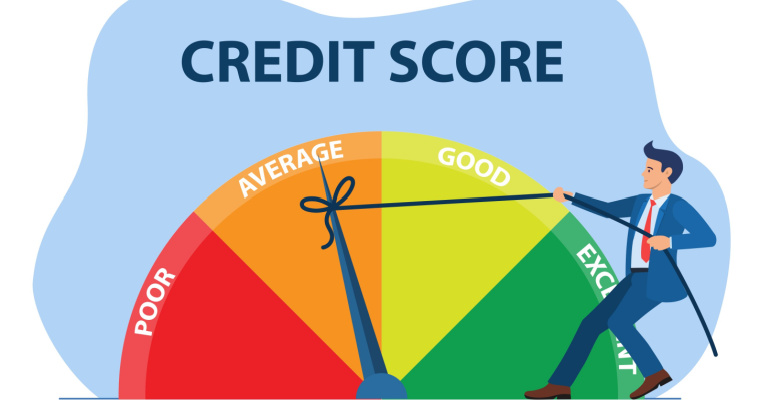Education Loan EMI Calculator – Its Working, Benefits and Documents Required

The rising cost of education seems to be a matter of concern for people belonging to the middle-class section of the society. To finance the soaring study expenses, people are inevitably leaning towards education loans. That said, before going forward, it is wise to evaluate the EMI obligations with an education loan emi calculator and make an informed decision based on that.
Read more to understand how an education loan EMI calculator works.
Purpose of Education Loan EMI Calculator
By using a student loan calculator, you can be aware of your financial liabilities beforehand. It becomes much easier to manage the repayment and meet other expenses.
For efficient financial planning, you must use tools like an education loan EMI calculator. You can find such a tool on the websites of top financiers. The calculation is based on the terms quoted by them; it helps you determine whether you can bear the EMIs or not for that specified tenure.
Check Your Education Loan EMI
Loan Amount
Rate of Interest (P.a)
%
Loan Tenure (Months)
Monthly EMI
0
Total Interest
Total Amount
How Useful is an Education Loan EMI Calculator?
If you are a potential student loan borrower, here are some reasons why you need to use this financial tool:
- Fast results: The manual calculation tends to get extremely hectic, especially if you have multiple combinations of loan amount and tenure to compare. Using an online education loan calculator, you can obtain the results instantly.
- Accurate calculations: Since you are not relying on the manual calculation procedure, the risk of erroneous results is NIL. However, make sure that the values you are entering while computing the EMI amount are correct.
- Easily accessible: One of its key advantages also includes its easy availability. As mentioned earlier, you can find the tool on almost every financial website.
Also Read
Working of Education Loan EMI Calculator
An EMI calculator is an easy-to-use utility tool that lets you calculate how much monthly repayment you need to make for a particular loan amount. Individuals need to input the following data to calculate the amount:
- Loan amount
- Rate of interest
- Tenure
Individuals can manually calculate their education loan EMI with the help of a mathematical formula. This formula is [P x R x (1 + R) ^ n] / [(1 + R) ^ n – 1].
Here, the P, R and N are variables. As a result, the EMI amount will keep changing according to the change in the variable amounts. Here the P, R and N denote principal amount, interest rate and repayment duration, respectively.
The bank sets both the rate of interest and repayment duration. Moreover, these factors depend on the principal amount the individual borrows from a financial institution. Individuals need to pay these EMIs every month until repayment, so calculating the amount beforehand is extremely important.
Most EMI calculators for education loans that are available online use the above formula to calculate one’s EMI. However, calculating the educational loan by yourself can be quite tough.
The online EMI calculator will use the above-mentioned mathematical formula to calculate the education loan EMI amount. Thus, online calculators minimize the possibility of mistakes which humans often tend to make.
Education Loan EMI Calculator Formula and Example
The formula used to calculate education loan EMI is this:
EMI = [P x R x (1 + R) ^ n] / [(1 + R) ^ n – 1]
Here, P stands for the principal amount, R signifies the rate of interest, and n denotes the repayment tenure.
It is evident that the EMI computation using this formula will be extremely challenging when you are comparing different lenders. While taking a decision on the loan amount and for how many years you want to bear the EMIs, the process needs to be over as quickly as possible. With a student loan EMI calculator, you can manage it all more conveniently.
Here is an example to help you understand the calculation better. Let’s assume you are availing of an education loan of Rs. 20 lakh at an interest of 6.50% per annum. If you decide to repay it for 15 years, the factors will be —
- P: Rs. 20,00,000
- R: 6.50/12 = 0.54
- N: 180 months
EMI: 20,00,000 x 0.54 x (1+0.54) ^ 180 / [(1+0.54) ^ 180-1]
After solving this equation, your equated monthly instalment amount will be Rs. 17,422.
If you use an education loan interest rate calculator for this evaluation, the result will be presented to you within just a few minutes.
Documents Required to Apply for Educational Loans
The following is a list of documents that most financial institutions require applicants to submit for an education loan:
1. Before Sanction
- Marksheet and certificates of Class X, XII or any other degree course
- Xerox copy of the admission letter issued to the student by an educational institution
- Fees schedule of the educational institute
- A KYC document like Aadhaar card, Voter ID card, passport, driving license, etc.
- Address proof like utility bills
- Birth certificate
- Last 6 months’ bank statement
- Income tax returns
- Last 2 months’ salary slip consisting of the joining date
- Any other form of income proof
- Two passport-sized photographs
- Duly filled loan application form
2. After Sanction
- Applicants must provide 3 security Post Dated Cheques if the payment mode is Standing Instructions or Automated Clearing House
- Co-applicants and applicants should submit a signed completed loan agreement and sanction letter
- Demand letter from an educational institution
- Margin money receipts paid to the educational institution
- In the case of overseas institution, the applicant and co-applicant needs to Form A2
Easy Steps to Apply for Education Loan
You need to follow the steps given below to apply for an education loan using an education loan calculator:
- Step 1
Visit the official website of the financial institution.
- Step 2
Navigate to the loan section and select the option for education loan from the dropdown menu.
- Step 3
Next, you need to click on the education loan eligibility section.
- Step 4
Based on your needs and requirements, the financial institution will provide you with various loan offers
- Step 5
You can calculate the loan EMI amount using an EMI calculator from the financial institution’s website to get an idea of your repayment burden.
- Step 6
After selecting the most advantageous loan offer, you need to gather the required documents.
- Step 7
You need to fill up the downloaded form and submit it to the financial institution’s branch along with the necessary documents.
- Step 8
Some financial institutions get in touch with loan applicants to verify their details.
- Step 9
After all these processes are completed, the bank will verify the given information. If they find all submitted information to be true, the financial institution will approve your loan application and disburse the loan amount to your bank account.
Also Read
Tax Benefits for Educational Loans
Individuals can claim tax deductions on the interest they pay for the education loan that they have availed to pursue higher education. Section 80E of the Income Tax Act allows these deductions on any loan for higher education.
The applicant needs to get a certificate from the financial institution from whom the applicant has borrowed the loan amount. Also, there is no limit on the deduction amount. One can take the benefits of these tax deductions for 8 years or till the loan amount is repaid.
Final Word
Now that you have a better understanding of an education loan emi calculator, make sure to use this before availing of a loan. Provide accurate values to avoid issues in your financial planning.
FAQs
Ans: While the EMI evaluation plays a huge role when you are planning on applying for an education loan, there are some other essential factors you must consider too. These are processing fees and prepayment of an education loan.
Ans: Education loan amortisation contains the systematic breakup of the loan, i.e., the scheduled payments, principal repayment and interest expenses. When you are using a student loan calculator, you will be able to see the amortisation schedule in detail as part of the final EMI calculation.
Ans: This financial tool is user-friendly and available on almost every financial website. All you have to do is enter the values of the principal amount, interest rate and repayment tenure to get the exact EMI amount.
Ans: For an education loan, the moratorium is a time between the loan’s sanction and the first EMI. During this time, students do not need to bear monthly liabilities for such a loan. However, interest accrual continues normally. This phenomenon is known as moratorium interest.
Ans: The Vidyalakshmi scheme is a government initiative that simplifies education loan applications for students. The portal includes a common education loan application form (CELAF) that allows a student to apply to 3 lenders at the same time.
Personal Loan in Your City

Axis Bank Personal Loan Interest Rates April 2023
Axis Bank Personal Loan interest rates are currently starting at 10.49% p.a. for loans of ₹25,000... Read More »No Credit Check Loans in India
What is No Credit Check Loan? A ‘no credit check loan’, as the name suggests, does not... Read More »Instant Cash Loan in 1 Hour Without Documents
Instant Cash Loan in 1 Hour Are you in any emergency cash crisis and in need of an instant cash ... Read More »Personal Loan on PAN Card – Check Your Eligibility & Apply Now!
Do you need urgent cash to pay for an unexpected expense, a pending bill, or a medical emergency? A... Read More »What are Short Term Loans? – Key Features and Benefits
Short Term Loan A short term loan provides urgent assistance for an individual’s financial req... Read More »Interest Rate on NBFC Personal Loan
NBFC Personal Loan Non-Banking Financial Companies (NBFCs) are becoming increasingly popul... Read More »How to Apply for a Pre Approved Personal Loan?
Pre Approved Personal Loan Pre-approved loans are instant personal loans that are offered by ban... Read More »Personal Loan Disbursal Process
A personal loan is an unsecured loan which you can avail to deal with any type of financial emergen... Read More »Unsecured Loan – Types, Benefits, Interest Rate & Eligibility
What is an Unsecured Loan? An unsecured loan is a type of loan that doesn't require any collater... Read More »Small Cash Loan on Aadhaar Card without PAN Card
Small cash loans are type of personal loans offered by banks and NBFCs to meet short-term financial... Read More »Personal Loan for Low CIBIL Score Applicants – Eligibility Criteria and How to Apply
Overview - Personal Loan With Low CIBIL Score Be it for a medical emergency, a sudden business o... Read More »What is a Fast Loan – Features, Interest Rates and How to Apply Online?
What is a Fast Loan? A fast loan is an instant personal loan that allows you to borrow money wit... Read More »Top 10 Chit Fund Schemes in India in 2023
Chit funds are one of the most popular return-generating saving schemes in India. It is a financial... Read More »10 Best Gold ETFs in India to Invest in April 2023
Gold ETFs or Gold Exchange Traded Funds are passively managed funds that track the price of physica... Read More »10 Best Demat Accounts in India for Beginners in 2023
Creation of Demat accounts revolutionised the way trades were conducted at the stock exchanges. It... Read More »20 Best Index Funds to Invest in India in April 2023
What is an Index Fund? An index fund is a type of mutual fund or exchange-traded fund (ETF) that... Read More »Best Arbitrage Mutual Funds to Invest in India in April 2023
Arbitrage funds are hybrid mutual fund schemes that aim to make low-risk profits by buying and sell... Read More »10 Best SIP Plans in India to Invest in April 2023
What is SIP? SIP or Systematic Investment Plan is a method of investing a fixed amount in ... Read More »10 Best Corporate Bond Funds in India to Invest in April 2023
Corporate bond funds are debt funds that invest at least 80% of the investment corpus in companies ... Read More »10 Best Bank for Savings Account in India [Highest Interest Rate 2023]
Savings account is a type of financial instrument offered by several banks. It lets you safely depo... Read More »
























